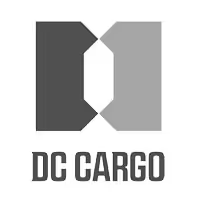Fixing Sitemap Errors in GSC

Creating a well-structured website is essential for ensuring that search engines can properly index your pages. One of the tools that help webmasters understand how search engines view their site is Google Search Console (GSC). Among the many features GSC provides, managing sitemaps is one of the most crucial. However, you may encounter various errors when submitting your sitemap to GSC. This article will explore the common errors found in submitted sitemaps, tools you can use for validation, and tips for error-free submissions.
Common errors in submitted sitemaps
When you submit a sitemap to GSC, you might come across various types of errors. Understanding these common issues can help you troubleshoot effectively and improve your website's visibility in search results.

1. Missing or incorrect XML formatting
XML is the standard markup language used for creating sitemaps. An incorrectly formatted XML file can lead to significant issues. Common mistakes include missing closing tags, incorrect nesting of elements, or using unsupported characters.
Make sure each tag is correctly opened and closed and follow the XML structure guidelines laid out by Google. Any discrepancies can lead to GSC rejecting your sitemap. Additionally, it's beneficial to validate your XML sitemap using online tools or validators before submission. These tools can highlight errors that may not be immediately visible, ensuring that your sitemap adheres to the required standards and is optimized for search engine crawling.
2. HTTP error responses
GSC checks the accessibility of your sitemap by attempting to fetch the file. If your sitemap URL returns an HTTP error, such as 404 (not found) or 500 (server error), GSC will not be able to process it.
To resolve this, ensure that the sitemap URL is correct and that your server is properly configured to serve the sitemap without any interruptions. Frequent downtimes can also cause these errors, so consider utilizing a reliable hosting service. Furthermore, it's wise to monitor your server's performance regularly and set up alerts for any downtime. This proactive approach can help you address issues before they affect your sitemap submission and overall site visibility.
3. URLs that are not indexed
Sometimes, the URLs present in the sitemap may not be indexed by Google. This could happen if your pages are blocked by robots.txt, the site is configured as noindex, or the URLs are excluded from search engine indexing for various reasons.
Make sure to review your website's settings and use GSC to identify any URLs that are generating errors. Make the necessary changes to allow indexing of important pages listed in your sitemap. Additionally, consider implementing a comprehensive internal linking strategy to enhance the discoverability of these URLs. By linking to these pages from other parts of your website, you can help search engines find and index them more efficiently, ultimately improving your site's overall SEO performance.
Tools for validation
Once you understand the common errors, the next step is validating your sitemap using various tools. These tools can help to identify issues before you submit your sitemap to GSC, streamlining the process and reducing the likelihood of errors.

1. XML Sitemap Validator
XML Sitemap Validator is an online tool that allows you to check your sitemap for errors. It can highlight problems such as incorrect XML formatting and alert you to broken links.
This tool is user-friendly; simply upload your sitemap URL or the XML file directly, and it presents a detailed analysis of any issues found. Fixing these issues before submission can drastically reduce errors in GSC. Additionally, the tool often provides suggestions for best practices, helping you optimize your sitemap for better search engine visibility. By ensuring your sitemap adheres to the latest XML standards, you can enhance your site's crawlability and indexing efficiency.
2. Google Search Console itself
Interestingly, GSC acts as a validation tool while you're working with your submitted sitemap. Once you've submitted your sitemap, GSC will provide you with immediate feedback on any errors encountered during the fetching process.
Regularly checking the Sitemaps section in GSC can keep you updated on any issues that arise after submission. This allows for quick adjustments to maintain your site's indexing health. Moreover, GSC offers insights into how many pages were indexed from your sitemap, giving you a clearer picture of your site's performance in search results. By monitoring these metrics, you can make informed decisions about content updates and optimization strategies.
3. Screaming Frog SEO Spider
Screaming Frog SEO Spider is a desktop application that crawls your website, allowing you to analyze various SEO factors, including sitemaps. It can provide information on broken links or redirect issues across your site.
This tool can be particularly useful for larger websites, where monitoring individual pages becomes cumbersome. It compiles all the data into a comprehensive report, making it easier to manage and address sitemap-related errors. Additionally, Screaming Frog allows you to customize your crawl settings, enabling you to focus on specific areas of your site or exclude certain sections that may not need immediate attention. This flexibility can save you time and ensure that your sitemap remains accurate and effective in guiding search engines through your content.
Tips for error-free submissions
Now that you've learned about common errors and validation tools, let's discuss some practical tips to ensure your sitemap submission is error-free.
1. Regularly update your sitemap
As your website grows and evolves, so should your sitemap. Regular updates are essential to reflect new content accurately. Whenever you add or remove pages, ensure your sitemap is updated to maintain its relevance.
Additionally, submitting an updated sitemap enhances your chances of quicker indexing for any new pages you've added. Search engines like Google prioritize fresh content, so keeping your sitemap current signals to them that your site is active and worth crawling frequently. This can lead to improved visibility in search results, as timely updates can help your new content get indexed faster, allowing it to reach your audience sooner.
2. Keep the sitemap lightweight and within limits
Google imposes certain limits on sitemaps, such as a maximum of 50,000 URLs and a file size of 50 MB (uncompressed). If you surpass these limits, you may need to divide your sitemap into multiple smaller sitemaps linked together by a sitemap index file.
Maintaining a lightweight sitemap not only facilitates quicker processing by GSC but also ensures easier management of your site's URLs. A well-organized sitemap can help search engines navigate your site more efficiently, which is particularly important for larger websites. Consider categorizing your URLs into different sitemaps based on content type or section of your site, as this can further enhance clarity and efficiency in how search engines crawl your pages.
3. Use canonical tags wisely
If your website has duplicate content or similar pages, make sure to use canonical tags effectively. By directing search engines to the primary version of the page, you’ll enhance clarity in your sitemap, reducing unnecessary indexing of duplicate URLs.
This practice not only helps in improving your search rankings but also guides Google more effectively through your site's architecture. Additionally, implementing canonical tags can prevent potential penalties associated with duplicate content, which can dilute your site's authority and negatively impact your SEO efforts. By clearly signaling to search engines which pages should be prioritized, you can ensure that your most valuable content receives the attention it deserves.
4. Resubmit your sitemap after errors
If you encounter errors and make the necessary corrections, don’t forget to resubmit your sitemap through GSC. This action prompts Google to revisit your sitemap, allowing you to address potential errors promptly.
GSC offers an option to ‘Test’ your sitemap before submission, which is beneficial for verifying that all corrections have been made appropriately. Furthermore, keeping an eye on the status of your sitemap in GSC can provide valuable insights into how well your site is being indexed. Regularly checking for any crawl errors or warnings can help you stay ahead of issues that might affect your site's performance in search results. Being proactive in this regard not only helps maintain a healthy sitemap but also contributes to a better overall user experience on your site.

As a Google Ads expert, I bring proven expertise in optimizing advertising campaigns to maximize ROI.
I specialize in sharing advanced strategies and targeted tips to refine Google Ads campaign management.
Committed to staying ahead of the latest trends and algorithms, I ensure that my clients receive cutting-edge solutions.
My passion for digital marketing and my ability to interpret data for strategic insights enable me to offer high-level consulting that aims to exceed expectations.
Google Partner Agency
We're a certified Google Partner Agency, which means we don’t guess — we optimize withGoogle’s full toolkit and insider support.
Your campaigns get pro-level execution, backed by real expertise (not theory).

4.9 out of 5 from 670+ reviews on Fiverr.
That’s not luck — that’s performance.
Click-driven mind
with plastic-brick obsession.
We build Google Ads campaigns with the same mindset we use to build tiny brick worlds: strategy, patience, and zero tolerance for wasted pieces.
Data is our blueprint. Growth is the only acceptable outcome.














